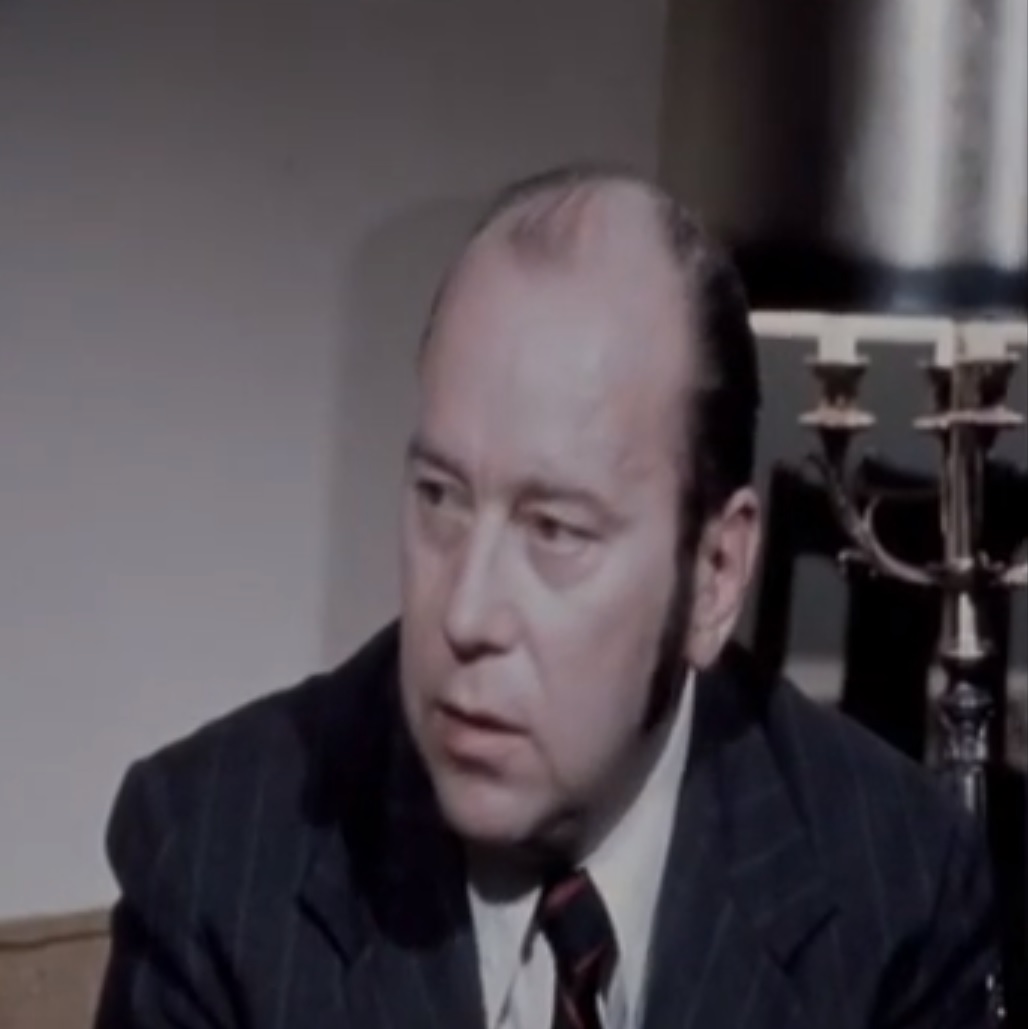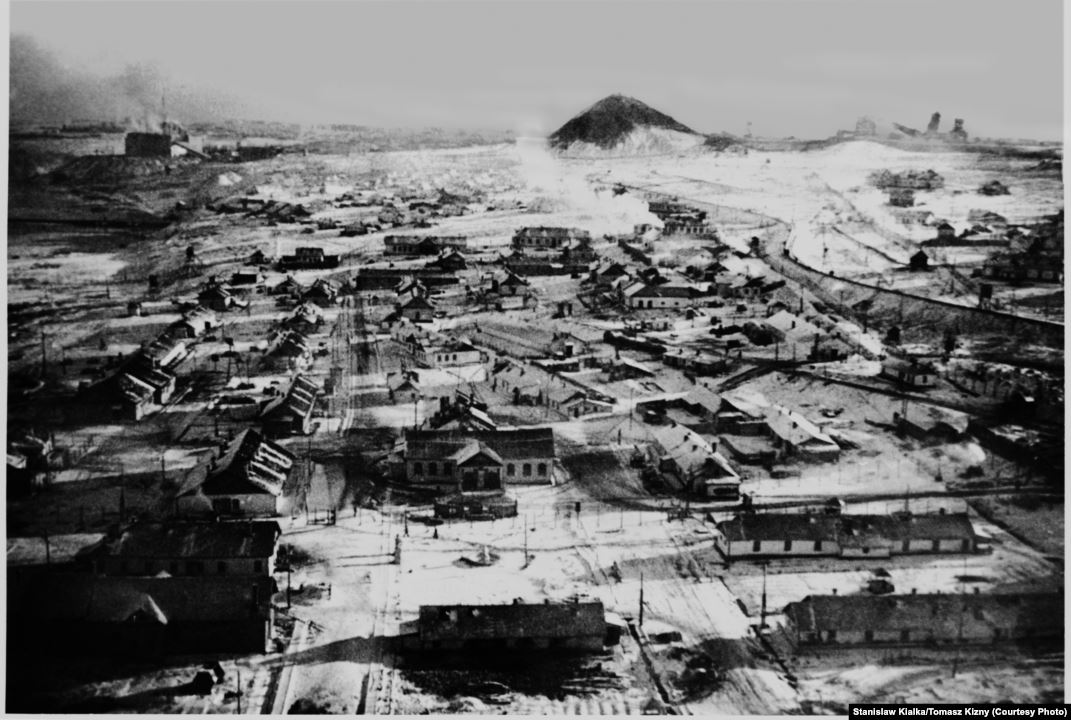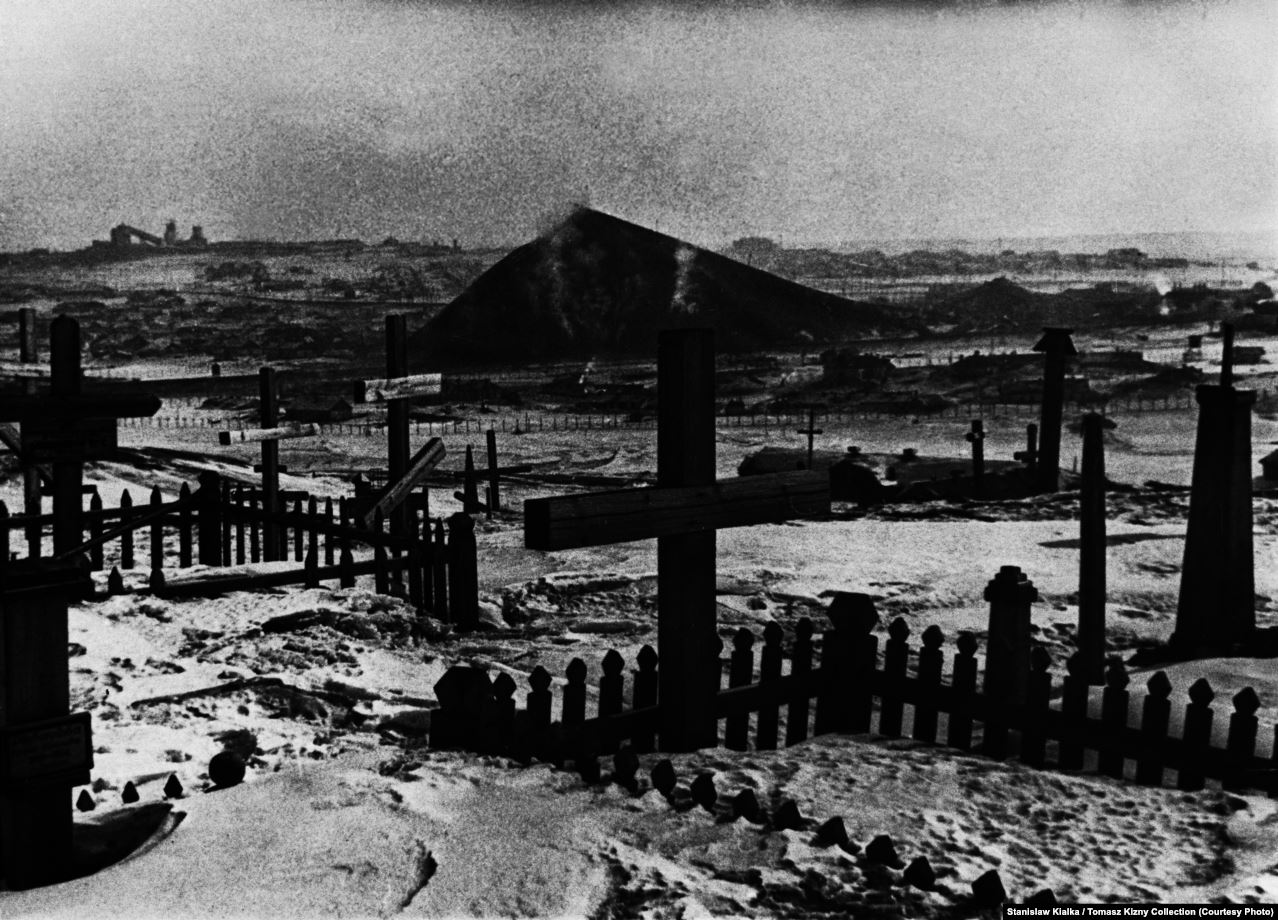Americans in the Soviet prison camps: narratives of survival
Henry Prown (a PhD candidate in American Studies from the College of William & Mary) brings to light the faith of Americans, who engaged in a largely forgotten mass migration to the communist USSR in the early 1930s. In the next decade many of these people would perish in the waves of politically motivated communist repressions. Some of them survived despite the hell of the Gulag prison camps and told their stories.
Buried within the Foreign Affairs Oral History Collection at the United States Library of Congress is an interview with a man named Peter Swiers.[1] In the interview, he recounted his career in the foreign service, and one case in particular that defined it.
On December 21st, 1971, while serving at the American embassy in Moscow, he escorted a nervous man through the Sheremetyevo International Airport. After a tense exchange with customs officials, the man and his family were grudgingly permitted to board a flight to Vienna. This seemingly minor incident brought an end to a nearly four-decade saga of exile, imprisonment, and survival and years of diplomatic wrangling.

Swiers’ charge that day, Alexander Dolgun, had arrived in the Soviet Union in the midst of the Great Depression after his father Michael was hired by the Moscow Automobile Works. Michael’s contract ran for two years, but upon its termination the Soviet government prevented them from leaving.
They were stuck, and Alexander grew up during devastation of the Great Terror and the Second World War. In that time, he would find work at the US embassy and make a life for himself in this foreign land. That life, however, was brutally interrupted in 1948 when the Soviet secret police arrested him as a spy. He would spend the next eight years in the Soviet Gulag.
But what makes this story truly remarkable is that Dolgun, a US citizen, an embassy employee no less, was kidnapped right in front of the US embassy building, interrogated, tortured, and imprisoned without the slightest intervention on the part of his own government. As Peter Swiers bitterly recalled, “there was something about the case that disturbed me.”[2]
Indeed, there is something innately troubling about a government abandoning one of its own citizens to this type of treatment. So unsettling that it would seem to be a one off – an anomaly. The truth, though, is far more disquieting.
In the early 1930s, thousands of Americans engaged in a largely forgotten mass migration to the USSR. Down on their luck miners, idealistic socialists, unemployed auto workers, and desperate farmers flocked to a country that portrayed itself, and that was portrayed by the American media, as a booming workers’ paradise. In the next decade many of these people would perish.
These ‘forgotten Americans’, as the indifferent US embassy in 1930s Moscow had taken to calling them, experienced the horrors of the 20th century first hand – mass murder, starvation, and total war. Many of them wound up imprisoned in the Gulag, and very few of them managed to return to the US. In fact, I only encountered this troubling history by chance while reading Solzhenitsyn’s The Gulag Archipelago where an American named ‘Alexander D.’ earned a brief mention for surviving Sukhanovka – “the most terrible prison the MGB had.”[3]
What I found was that, far from being a hindrance, their unusual nationality often saved them. They were curiosities, and that curiosity was shared by prisoners and guards alike.
This sparked my curiosity, and I eventually discovered his full name. More than that, I discovered that he had written about his experiences, and that he was not alone. Like many veterans of Soviet prisons and camps, American survivors felt the weight of those left behind to bear witness and testify.
Their written testimonials were the subject of my master’s thesis at the Ruprecht Karl University of Heidelberg. I wanted to bring these stories to light and to put them into the broader historical context of the Gulag and of Gulag literature. In the massive stream of human life that entered the camps, American prisoners constituted nothing more than a tiny current.
They were a small minority in the USSR and an even smaller minority in the camps, which housed prisoners from across the Eurasian landmass. For the most part, they found themselves alone – without the ethnic support that other minorities had and without the common shared majority national identity that the Russians had. The fact that these Americans still managed to survive despite lacking this support structure fascinated me, and I wanted to know how they did it.
What I found was that, far from being a hindrance, their unusual nationality often saved them. They were curiosities, and that curiosity was shared by prisoners and guards alike. They built relationships around this curiosity, and utilized it to obtain extra meals, protection from the criminal elements, and better job assignments.

As the camp inmate John Noble put it, “I was an American – and as such, a minor Vorkuta VIP.”[4] To endure a system seemingly meant to destroy them, those in the Gulag relied on special skills, personal connections, deception, and luck. American prisoners were no exception to this rule, but they did have one added advantage – their identity. To illustrate this, I would like to share a few anecdotes which may, in turn, spark your own curiosity and perhaps encourage you to learn more about these exceptional individuals.
Margaret Werner recalled quickly realizing that “she was the only American in the entire camp.”[5] Men and women were not separated at that time, and she faced “physical abuse, unwanted sexual harassment, and privation.”[6]
One spurned suitor, a particularly brutal criminal (known as ‘urki’ in the USSR), beat her savagely. She felt totally hopeless, but soon after, the criminal, Mikhail, had a religious awakening so profound that she “had no doubt it was supernatural” and became her “personal bodyguard and friend.”[7] Strange turnarounds, religious conversions, and criminal friendships are all recurring themes in these autobiographies.
The Italian-American Thomas Sgovio was a talented artist, however he felt his skills fading in the midst of camp life. But one day a well-connected criminal, Mustaf, found out that Sgovio could draw. “Here,” he said, handing over a paper and a pencil, “draw me.”[8] Sgovio did, and Mustaf liked it, and they became acquaintances. It was not just art that interested Mustaf, though.
Sgovio found out that, like the criminals other Americans had encountered through the Gulag, Mustaf and his fellow urki were very interested in American cinema. From then on, he “earned, by drawing and story-telling, food and tobacco.”[9] Sgovio counted himself lucky. As he noted, “others, less fortunate, had to spend hours of degrading work to receive less than I.”[10]
John Noble, the ‘Vorkuta VIP’, learned through first-hand experience toiling in the deadly coal mines the vital necessity of avoiding degrading work. Luckily, a Georgian department manager to whom he had spoken to “once or twice about America” remembered him when a place opened up for a cushy job in the washroom.[11] “Amerikanitz,” he asked, “how would you like to work upstairs for a change?”[12]
“I knew that I was living in the midst of a totally inhumane society where survival was the first duty and where too much tenderness or sentiment or resentment or rage would only sap my strength… Don’t let it get you down to the point where you forget to watch out for any advantage.”[18]
And just like that, Noble briefly entered the ranks of the privileged few. What would have been menial jobs on the outside – cleaning laundry, cooking, sweeping – were eagerly sought after in camp, and could mean the difference between life and death. So too, could a stint in the hospital. Prisoners were so desperate for reprieve that they would occasionally self-mutilate. They would cut off limbs, forcibly induce infections, and (if they were part of the criminal class) threaten and intimidate orderlies and doctors.
One American even claimed than an urka “nailed his scrotum to the bunk and yelled, ‘Kill me, you bastards! Take me away, kill me,’” but the orderly had “simply pulled out the nail with a claw hammer, poured iodine on it” and sent him on his way.[13] Noble did not have to go quite so far. He caught a bad fever, and ended up meeting a Hungarian doctor, ex-wrestler, and all around “very resourceful slave.”[14]

The Hungarian was a ‘businessman’ of sorts, and his most successful scheme involved selling “a supposedly powerful sex potion” made out of “a type of cactus…packed in honey” which “he sold in a series of fifteen injections for as much as 300 rubles” to officials and criminals.[15] This made him a very rich man, by the standards of the Gulag, and he shared his bounty with Noble – including some illegal brewed liquor. Though Noble ruefully noted that “I drank this polar moonshine only once.”[16]
Entrepreneurship, odd as it may seem, proved to be a highly desirable trait in the beating heart of this Communist system. Alexander Dolgun was a natural born salesman. Many months before his arrival in camp, a fellow prisoner had given him some “some rules for survival,” one of which was that, since there would always be “some need to be met in every camp,” you should “sell what you could to your fellow prisoners.”[17]
Dolgun took this advice to heart, and consequently he developed a very straightforward philosophy towards camp life: “I knew that I was living in the midst of a totally inhumane society where survival was the first duty and where too much tenderness or sentiment or resentment or rage would only sap my strength… Don’t let it get you down to the point where you forget to watch out for any advantage.”[18]
So, he channeled his energies towards the exploitation of an untapped market. An orderly in the hospital had remarked to Dolgun that his spoons were constantly being stolen by prisoners, because they were not issued to them in camp. Naturally, Dolgun “resolved to steal a spoon too” so that he could get “into the spoon business.”[19]

He used what little he knew about metallurgy to create a crude cast of the spoon and a crucible in which to mold it. Soon he was turning out a few each day. He “sold spoons to Kuznetsov [the orderly] for cooking oil,” and to other prisoners for various valuable camp resources.[20] When the “market began to go a bit soft” he hired a man to make him a small wooden sculpture of a nude woman, from which he made a cast and started producing erotic spoons “which sold very well.”[21]
Dolgun always kept an eye out for demand to be filled. When he needed metal for his side projects, he would steal it. One day a brigadier complained to him that “some son of a bitch is stealing stoves and the supply room is mad as hell…must be one of those civilian drivers.”[22] But it was actually Dolgun, who had snuck into the on-site factory and hauled off the stoves they were making.
A number of the autobiographies I reviewed mentioned the role that (American) media played in their family’s decision to emigrate, and the consequent shock when they discovered that the worker’s state was not all that it seemed.
The “hardest part of my career…was stealing stoves,” he remembered.[23] These numerous schemes allowed him to live in relative comfort. He was usually paid in food, well below market rate, of course, but enough to feed himself and share with others. All told, Dolgun’s entrepreneurial attitude served him well. He knew how to spot demand and he could produce what was needed or find someone else who could.
In fact, his business was built on his ability to form and maintain trusting relationships with his suppliers, partners, and customers. Intentionally or not, Dolgun brought a bit of the spirit of American capitalism to this Soviet labor camp.

During the 1930s, however, the viability of the American capitalist experiment itself was an open question. Indeed, its seeming collapse is exactly what drew so many to the USSR in the first place – either for economic or political reasons. American media outlets often painted a rosy picture of life in the USSR.
One typical headline from The New York Times, though you might confuse it for Pravda, reads “BIG YEAR FOR SOVIET RUSSIA; Strides in Socialization Were Made and Start of Five Years' Plan Was Successful.”[24] It’s author, Walter Duranty, would later become infamous for denying the 1932-33 Soviet famine.
The journalist Eugene Lyons, who lived and worked in the USSR during this era, called these efforts to cover up the crimes of the Soviet regime and to focus solely on its supposed achievements a “conspiracy of silence.”[25] As the Hungarian sociologist Paul Hollander more cautiously put it in his study of Western fellow travelers, “as long as the generally favorable attitudes towards the regime persisted, the Soviet version [of events] was always the more credible and the blemishes found in Soviet society and Soviet policies could be ‘put into context.’”[26]
A number of the autobiographies I reviewed mentioned the role that media played in their family’s decision to emigrate, and the consequent shock when they discovered that the worker’s state was not all that it seemed. My current dissertation research focuses on communist media in the US – particularly the party paper Daily Worker.
In comparing and contrasting its coverage of the USSR with that of more mainstream papers, as well as with its own coverage of domestic events, I hope to map the media landscape that gave so many Americans a false hope of a better life in desperate times. This false hope entrapped them in a foreign land, from which few would return.
But those that made it home did not engage in a conspiracy of silence. Far from it. They felt called to testify because, as Alexander Dolgun put it, “I promised I would.”[27]
Sources and literature:
[1] "Interview with Peter B. Swiers." Interview by Charles Stuart Kennedy. Library of Congress. The Foreign Affairs Oral History Collection of the Association for Diplomatic Studies and Training, 6 June 1994.
[2] Ibid.
[3] Solzhenitsyn, Aleksandr. The Gulag Archipelago, 1918-1956: An Experiment in Literary Investigation I-II.
[4] Noble, John. I Was a Slave in
[5] Tobien, Karl. Dancing under the Red Star: The Extraordinary Story of Margaret Werner, the Only American Woman to Survive Stalin's Gulag.
[6] Ibid., 205.
[7] Ibid., 195.
[8] Sgovio, Thomas. Dear
[9] Ibid., 168.
[10] Ibid.
[11] Noble, John. I Was a Slave in
[12] Ibid.
[13] Dolgun, Alexander, and Patrick Watson. Alexander Dolgun's Story: An American in the Gulag.
[14] Noble, John. I Was a Slave in
[15] Ibid., 123.
[16] 137.
[17] Dolgun, Alexander, and Patrick Watson. Alexander Dolgun's Story: An American in the Gulag.
[18] Ibid., 216-217.
[19] Ibid., 206.
[20] Ibid., 207.
[21] Ibid., 208.
[22] Ibid., 213.
[23] Ibid., 212.
[24] Duranty, Walter. “1929 WAS BIG YEAR FOR SOVIET RUSSIA; Strides in Socialization Were Made and Start of Five Years' Plan Was Successful.” The New York Times, The New York Times, 1 Jan. 1930. www.nytimes.com/1930/01/01/archives/1929-was-big-year-for-soviet-russia-strides-in-socialization-were.html.
[25] Lyons, Eugene. Assignment in Utopia. Piscataway, NJ: Transaction Publishers, 1938. 542.
[26] Hollander, Paul. Political Pilgrims: Western Intellectuals in Search of the Good Society. Abingdon, UK: Routledge, 1981. 167.
[27] Dolgun, Alexander, and Patrick Watson. Alexander Dolgun's Story: An American in the Gulag.